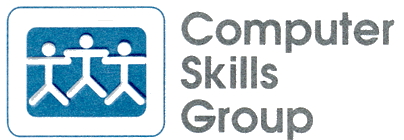

Most of you have heard about the disk defragmenter program but experience tells me that there are some prevalent misconceptions about it. Here's a little information which might save you some time and/or effort. I'll start with some background. If that's old hat to you, just skip on down to the Tips about using defragmentation - in the last section of the bulletin.
What is disk fragmentation anyway?
The easiest way to understand what fragmentation is, is to use a very simplistic example. Lets say you have 25 documents written out to your disk, neatly, one right after the other. Now, you want to re-open the 21st document and add two new pages of text to it. The document becomes larger, requiring more disk space than it used to take to store it. When you tell the computer to write the revised document back to the disk, there isn't enough space to write it back where it was originally written.
One of two things has to happen. The Windows file system either has to go find a large enough free space to write the newly enlarged file or, it has to write as much of the file as it can in the old space and then find some other unused space (or spaces) to write the remainder of the file. It's that tail-end portion, or portions, of the revised document that are known as a "fragments", and your computer's hard disk it chock full of them.
Of course, when you go to retrieve that document to work on it the next time, the file system has to know that there is another fragment and be able to locate and retrieve it. To us, this sounds like Windows has chosen to do all this the hard way. Just take their word for it. Today's file systems are quite sophisticated and this is the better way. Not only is this done quickly, but it keeps your hard disk from filling up rapidly. Windows writes individual files in multiple locations all the time. Files can have many fragments and we hardly notice.
So what's the problem?
The problem is this. Every time you go to read a file which contains several fragments, the file system has to locate them, one at a time. Since the fragments are likely to be on entirely different parts of the disk, the read heads have to be moved to the correct track and then wait for the start of the data to come spinning around under the read heads. Only then does the reading of the data resume. Moving the read heads and waiting for the data to spin around to be under the read head, are the two slowest parts of reading from a disk. Slow is very relative you understand, but if you have to do a LOT of this, you eventually take enough time that you can notice it as being slower.
Defragmentation to the rescue -
Now remember that the computers have gotten faster - much faster! You would have noticed the affects of file fragmentation much sooner, back 15 years or so ago. On the older slower disks, when you began noticing that your computer had slowed down, you would defragment your hard disk and it would speed up again. Defragmenting is a process of reading each and every file on your hard disk and removing all file fragmentations by physically moving it to a place where it can be read in a single uninterrupted pass. Once done, the read heads only need to be positioned to the correct track once. The delay waiting for the start of the data to fly around under the read head, happens once only.
But what about today?
As I mentioned, today's computers are MUCH faster. The first thing I want to tell you is that defragmentation has nearly outlived it's usefulness. Yes, you can, over a long period of time, create soooooo much fragmentation that it will slow your computer down. The operative words here are: "much faster" and "soooooo much fragmentation". Today's computers and hard disks are so fast that retrieving even heavily fragmented files is typically not even noticed. Yet, out of old habit I think, many people schedule these long defragmentation runs as often as weekly. That is simply not necessary. Why make a 4 hour run so you can save one-half a second reading a file?
Tips about using defragmentation -
That's about all that's practical to know about defragmentation.